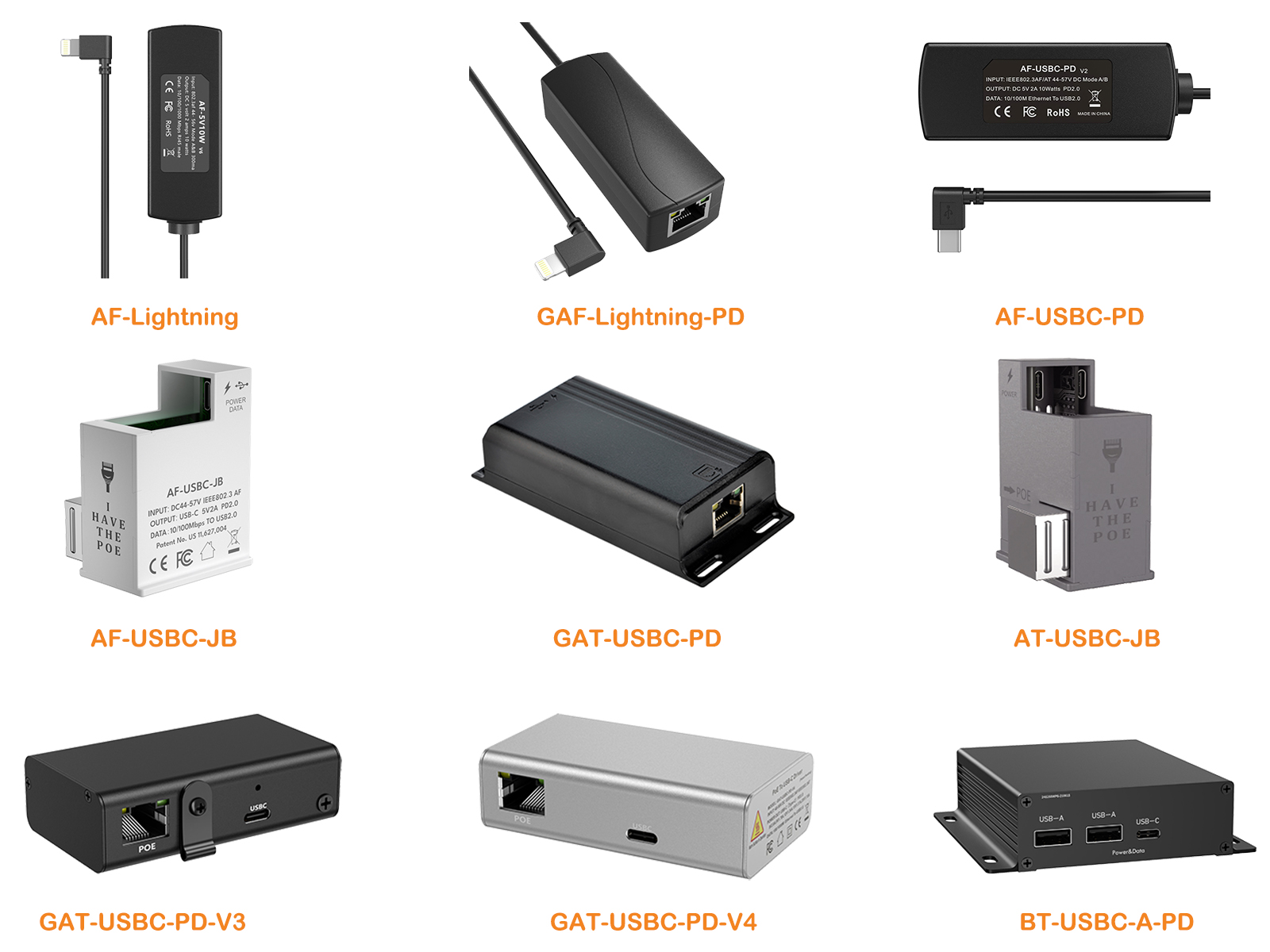PoE to USB-C, providing a stable, fast and secure solution for tablets
The perfect combination of PoE and USB-C provides a stable, fast and safe solution for smart life
The Proliferation and Enhancement of PoE Standards, Characteristics and Advantages of USB-C Interface
Most switches in the market have adopted PoE technology, evolving from the initial PoE standard to PoE+ and PoE++, with power outputs increasing from 15W to 30W and up to 90W.
Covering a broader range of device needs, PoE has gradually become the preferred technology for device power supply and network transmission.
The introduction of the USB-C interface signifies a revolution in connectivity technology. Compared to traditional USB interfaces, USB-C offers a smaller form factor, reversible plug and play, higher power output, and faster data transfer speeds, making it the preferred interface for many electronic products on the market.
Its widespread application in mobile devices, computers, cameras, and other fields has made data transfer and power supply more convenient, laying a solid foundation for the integration of PoE and USB-C.

Technical Integration of PoE and USB-C:
Power Supply Method: PoE achieves power transmission through Ethernet cables, while the USB-C interface supports higher power output. Combining these two technologies provides devices with a more robust power supply capability, suitable for devices with various power consumption needs.
Data Transfer: The high-speed data transfer feature of the USB-C interface complements the stability of PoE. Through the fusion of PoE and USB-C, devices can enjoy efficient power supply and fast data transfer simultaneously, offering users a smoother user experience.
Application Scenarios: The combination of PoE and USB-C becomes particularly crucial in scenarios such as smart video conferencing, appointment scheduling, smart homes, and remote offices. Devices no longer require intricate power management, simultaneously achieving efficient data transfer, providing users with a more convenient and efficient solution.

To align with trends and meet market demands, we have integrated PoE and USB-C, developing and launching a series of patented products that achieve PoE to USB-C/Lightning conversion, simultaneously supporting charging and network transmission, catering to diverse device and application needs.
- AF-Lightning and GAF-Lightning-PD:
Designed for iOS devices such as iPad mini 1-5, iPad Air, and older iPad models. AF-Lightning provides 5V10W charging for iOS devices through PoE to Lightning conversion, while GAF-Lightning-PD offers 5V10W charging for iOS devices alongside 10/100M Ethernet network transmission.
- AF-USBC-PD and AF-USBC-JB:
Through 802.3af PoE to USB-C conversion, these devices provide 5V10W charging for USB-C devices and 10/100M wired network transmission.
- GAT-USBC-PD and AT-USBC-JB:
Through 802.3af/at PoE to USB-C conversion, these devices offer USB-C PD 3.0 power output for USB-C devices, with a maximum power of 23W, and simultaneous 10/100M network transmission.
- GAT-USBC-PD-V3 and GAT-USBC-PD-V4:
Further enhancing power output and network transmission speed, these devices achieve 802.3af/at PoE to USB-C conversion, providing USB-C PD 3.0 power output for USB-C devices, with a maximum power of 23W, and simultaneous 10/100/1000M network transmission.
- BT-UBC-A-PD:
Through 802.3af/at/bt PoE to USB-C conversion, this device delivers USB-C PD 3.0 power output for USB-C devices, with a maximum power of 60W, and simultaneous 10/100M network transmission. Additionally, it is equipped with two USB-A ports, enabling connection to other devices and providing power and networking for low-power USB devices.
The combination of PoE and USB-C not only represents technological innovation but also brings more convenient ways of power supply and data transfer to our lives. Whether in the office, hospital, home, or industrial environments, this trend will provide more stable, faster, and safer solutions for various application scenarios. As technology continues to evolve, our products will be continually updated to meet the ever-changing demands of the market.


